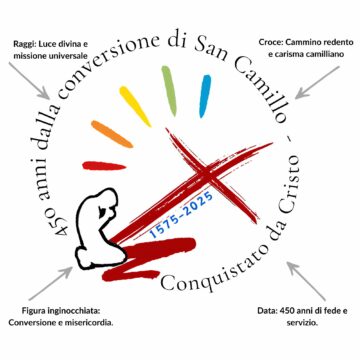 The decision about when to begin palliative care is not an easy one. Various interconnected factors are at work in this process. They are emotional, cultural and scientific factors that have different impacts on the various actors that are involved in the decision. A health-care professional, who is a repository of scientific knowledge, sees an incapacity to eliminate an illness as a failure and prolongs active treatment for as long as this is possible. A patient entrusts himself or herself to a health-care professional and cultivates hope in the (apparent) omnipotence of medicine. The patient’s family relatives feel that they are not up to deciding on the matter, fearful that they will bring about death before its time and even take responsibility for euthanasia. Trust in science, a wish to survive, and fear of a hurried decision that cannot be appealed against are often the variables that delay the beginning of the provision of palliative care – a particularly important fact in being able to predict how long a person ‘has to live’ and thus in establishing certain priorities.
The decision about when to begin palliative care is not an easy one. Various interconnected factors are at work in this process. They are emotional, cultural and scientific factors that have different impacts on the various actors that are involved in the decision. A health-care professional, who is a repository of scientific knowledge, sees an incapacity to eliminate an illness as a failure and prolongs active treatment for as long as this is possible. A patient entrusts himself or herself to a health-care professional and cultivates hope in the (apparent) omnipotence of medicine. The patient’s family relatives feel that they are not up to deciding on the matter, fearful that they will bring about death before its time and even take responsibility for euthanasia. Trust in science, a wish to survive, and fear of a hurried decision that cannot be appealed against are often the variables that delay the beginning of the provision of palliative care – a particularly important fact in being able to predict how long a person ‘has to live’ and thus in establishing certain priorities.
Medical practice has made great strides forward in understanding palliative care. This last has ceased to be the panacea of the ‘last moments’ and has been transformed into what it is called to be – a specific therapeutic approach that begins when the treatment of an illness is no longer able (inasmuch as this can be foreseen) to modify the prognosis and, indeed, could become disproportionate or injurious. Palliative care is also called ‘simultaneous care’ when it acts together with care designed to defeat the illness, and now also ‘terminal care’ when it becomes the only treatment assured to a sick person and their relational environment. Palliative care, therefore, is not an appendix of medicine. On the contrary: it supports its curative potentialities. The earlier palliative action takes place, the easier it become to shift priorities from the illness to the patient, from healing to health/salvation, and from days to time. When the illness ceases to have a priority role in deciding on therapeutic choices, life and its nocturnal face – death – are no longer frightening!
At the basis of the new thought about palliative care and its applicability to an early stage of the illness there is a renewed theological and anthropological approach according to which life is not the quantitative result of time spent on earth but the depth of meaning that is achieved through experiences, relationships and encounters. In other words, early palliative care seems to be a fulfilment of the aphorism that suggests: ‘add life to days and not days to life’. In accepting finitude as an inseparable part of what a human being is, the quality – that is to say the meaning – of life is determined by variables that are others than those that are merely quantitative and mathematical in character. Memories; relationships that have been built up; and values borne witness to in ordinary daily life, all these are variables that prolong life into eternity – without extending it for a minute – through the memories of those that survive.
It is a good thing, therefore, that with greater frequency palliative care is to the fore during an early stage of illnesses that have a negative outcome or a degenerative character. This means awakening ourselves from the illusion of omnipotence and deciding to dedicate greater time to the things that matter, to people held dear, and to relationships. Rather than getting caught up in a frenetic search for healing, it means living time as an opportunity for a new life. To quote an author who is of great contemporary relevance: ‘And you live now! The past is simply a memory; it does not exist. It is your memories, which you accumulate, re-order, and falsify. Now, instead, you falsify nothing. What you expect of the future is a box full of illusions, an empty box. Who tells you that it will be filled? “Now I’ll work and then I will retire and go fishing”. Who knows if there will still be fish? Life takes place now and it is now that one should know how to enjoy it’.[1] This is what palliative care applied at the early stage of an illness allows: to live the present moment, with the greatest quality of life possible, dealing with the discomforts that an illness brings with it without seeking to eliminate an invincible enemy. Teriani once again comes to our help with another famous aphorism: ‘real great freedom begins when choices finish’.
In substantial terms, it seems that we should change our approach to pathologies with a bad prognosis, or grave organ deficiencies, that are at the terminal stage and shift the objective from the point of the view of the organ or the apparatus that is involved to a more global outlook that takes into account the quality of life of the patient. To quote the SIAARTI Document on Consent,[2] I believe that I can subscribe to the judgement and the wishes of those commentators who argue: ‘it is to be hoped that the current organisational system for treatment and care, which is too often based…upon ‘binary’ approaches that envisage active intervention, on the one hand, and the stopping of such action and the introduction of palliative care, on the other, has been left behind with the introduction of the practice of simultaneous palliative care which enables us to address, at one and the same time and in an adequate way, the questions of proportionate treatment, quality of life, organisational strategy, and the quality/dignity of dying’.
[1] T. Terzani, La fine è il mio inizio (2006).
[2] SIAARTI, Grandi Insufficienze d’organo end stage: cure intensive o palliative? (2013). The part of this text that is here referred to concerns the ethical and legal observations of the same document.











